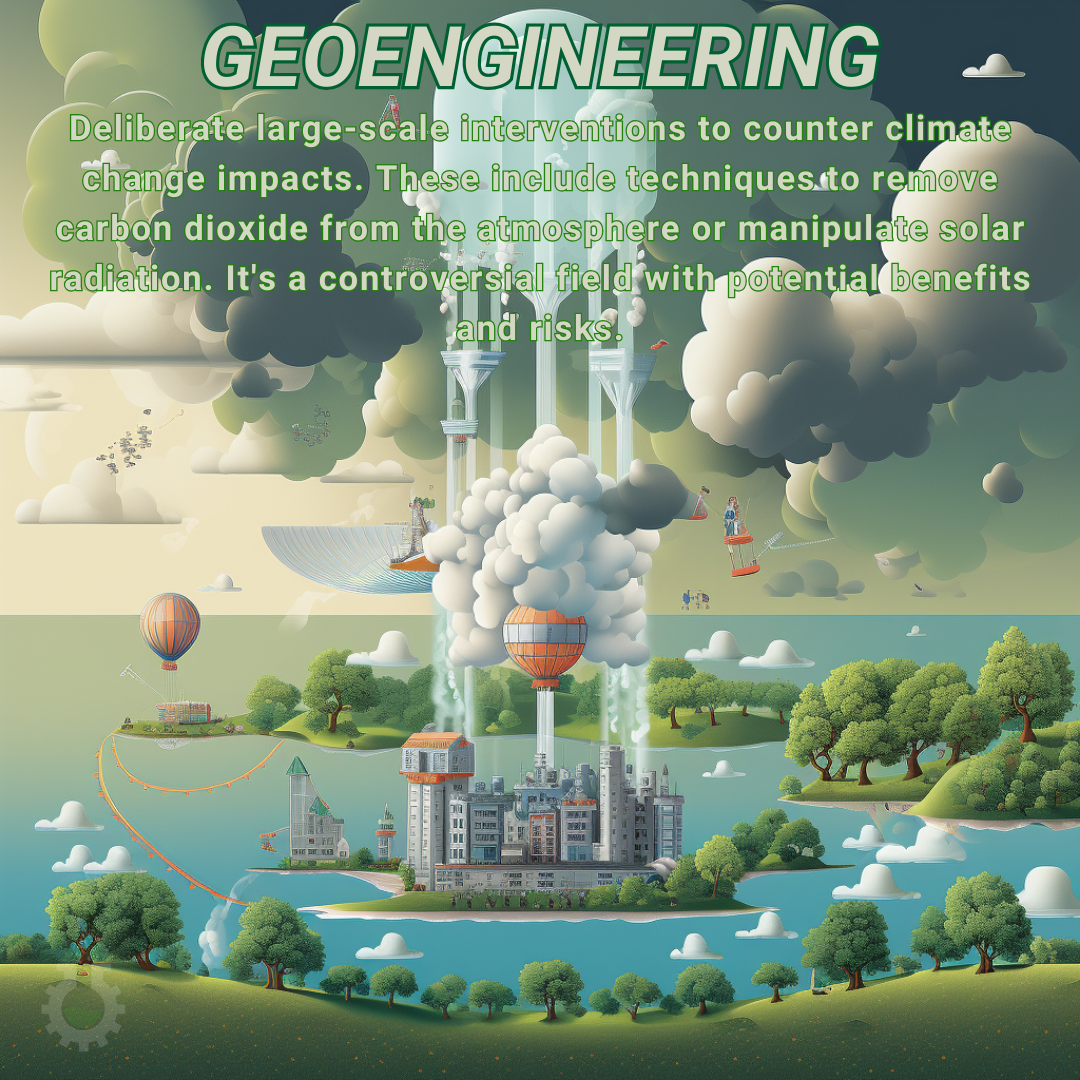September 12, 2023
Climate Change Poster Collection of the Day – Geoengineering
Book a Demo
Today’s Climate Change Poster Collection features Geoengineering, an emerging field that incorporates large-scale interventions in Earth’s natural systems to counteract the devastating effects of climate change. This field includes two primary methodologies: Solar Radiation Management (SRM) and Carbon Dioxide Removal (CDR).
SRM methods comprise innovative techniques that aim to reflect a small portion of the Sun’s energy back into space. This redirection of solar energy is anticipated to have a cooling effect on the planet, thereby reducing global warming. On the other hand, CDR techniques are designed to directly address the root cause of climate change by removing harmful carbon dioxide from the atmosphere.
Institutions around the world are investing in the study of these techniques, including Harvard University. The Harvard’s Solar Geoengineering Research Program aims to advance knowledge about solar geoengineering through rigorous research and policy development. They stress, however, that their goal is not to advocate for the immediate deployment of these techniques.
The research program emphasizes the importance of understanding both the benefits and drawbacks of geoengineering. This knowledge is crucial to prepare for potential future climate emergencies and to ensure that the adopted strategies are not only effective but also safe.
However, despite the potential of geoengineering to mitigate climate change, it carries significant risks. These include unforeseen environmental impacts and challenges in governance and regulation. For example, large-scale interventions could potentially disrupt ecosystems, and the implementation of these techniques may be difficult to regulate effectively.
Furthermore, there are concerns that geoengineering solutions could inadvertently exacerbate social and economic inequality. By focusing resources on these large-scale interventions, attention could be diverted from the need to reduce emissions. This could result in a false sense of security that might ultimately hinder efforts to combat climate change.
Hence, while geoengineering presents a promising avenue for mitigating climate change, it should not be seen as a silver bullet solution. It is vital to prioritize reducing greenhouse gas emissions over reliance on geoengineering solutions. The fight against climate change needs to be a multifaceted approach, and while geoengineering could be part of the solution, it should not replace the crucial efforts to reduce our carbon footprint.
Discover an inspiring collection of climate change posters.



